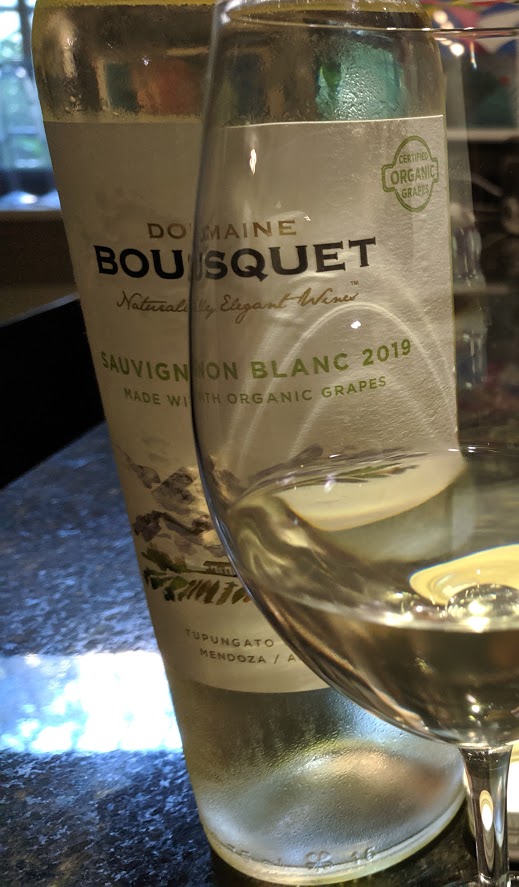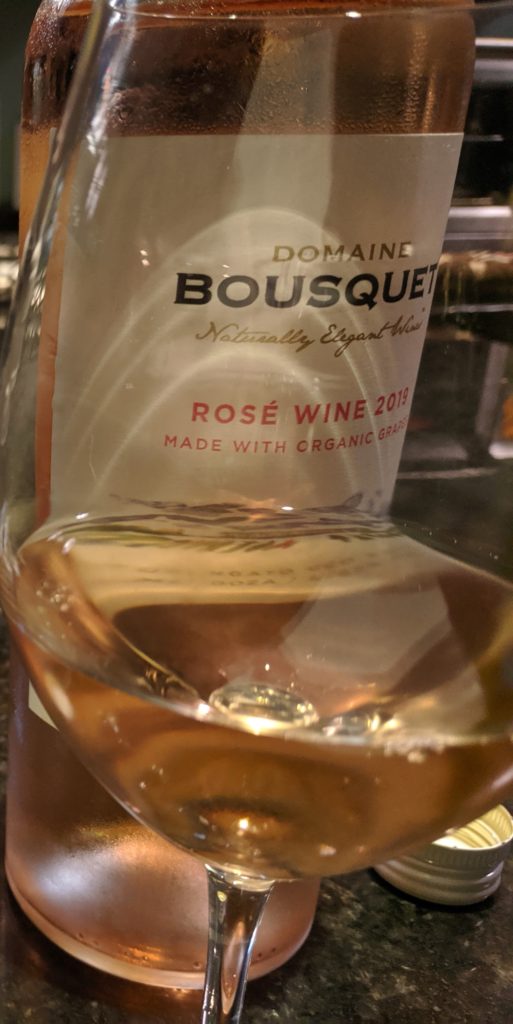Looking for a perfect pair of wines to take along to your next picnic? Look no further than Domaine Bouquet’s Sauvignon Blanc and Rose wines from the latest vintage. This Argentine duo are made from organically grown grapes, in vineyards situated within the high altitudes of Mendoza’s Uco Valley. Produced by the Bousquet-Al Ameri family, the winery has made wines for the past 15 years.
First established by Jean Bousquet, Anne Bousquet took over in 2011, joined by her husband Labid Al Ameri. The husband and wife team brought in consulting winemaker Paul Hobbs to improve their viticultural practices in 2015 and are presently working on their newest planting project, which features Grenache and Cabernet Franc.
However, their overarching goal is simply stated by Anne, “We just want to make the finest wines possible and sell them at prices people can afford.” What more could you want?
Tasting Notes
Domaine Bousquet Sauvignon Blanc 2019, Tupungato Uco Valley, Mendoza, Argentina, $13.00
A pronounced nose of tropical fruit, citrus and pineapple, with a dry palate of fresh fruit and a slight herbal note. It is easy to drink (perhaps a bit, too easy? 😊), and very refreshing with long length.
Domaine Bousquet Rosé 2019, Tupungato Uco Valley, Mendoza, Argentina, $13.00
A blend of 45% Malbec, 45% Cabernet Sauvignon, 5% Sauvignon Blanc and 5% Pinot Gris, this rosé is pale salmon in color. It is dry on the palate, with ripe raspberries, cherries and a hint of herbs, with medium acidity, medium body and long length.
Category Archives: Argentina
Colome’s winemaker is living the impossible dream
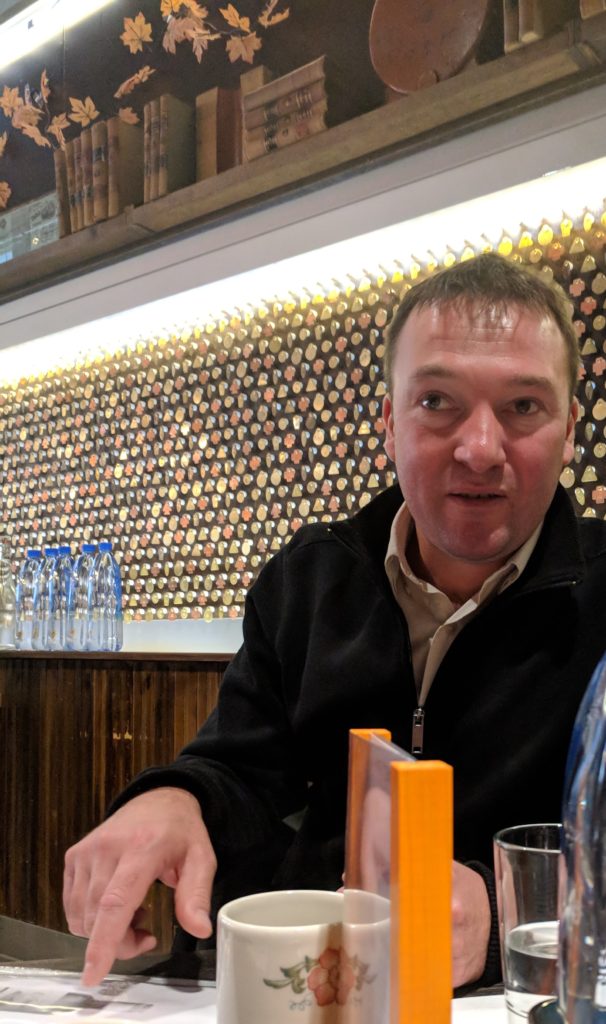 Born, raised and educated in Burgundy, Thibaut Delmotte launched his wine career doing three harvests each in Burgundy and Bordeaux before taking a year off to travel throughout South America. He booked an open ticket, headed to Buenos Aires and visited Argentina, Chile and Brazil, eventually finding himself somewhat settled in Salta teaching French at the local Alliance Française.
Born, raised and educated in Burgundy, Thibaut Delmotte launched his wine career doing three harvests each in Burgundy and Bordeaux before taking a year off to travel throughout South America. He booked an open ticket, headed to Buenos Aires and visited Argentina, Chile and Brazil, eventually finding himself somewhat settled in Salta teaching French at the local Alliance Française.
When a new acquaintance discovered his background as a winemaker she told him about a high elevation vineyard north of the city. He didn’t believe it was possible to grow vines at such an altitude but was intrigued enough to secure an appointment with the man behind the project: Donald Hess.
Thibaut and Donald arranged to meet at the property at 9:00 AM, which required Thibault to depart Salta at 5:00 AM. By 6:00 AM, the pavement gave way to gravel as he snaked his way up the mountain. By 9:00 AM, there was no sign of life and he was beginning to think that he had been punked. Soon he came to a small village and was assured that he was close to his destination. Another 40 minutes of driving brought him face to face with the tall, Swiss gentleman who promptly laughed at seeing the small, compact rental car in which Thibault had made the journey.
Still disbelieving, Thibaut permitted Donald to give him a tour of the mountainous property, which was barren desert – more suited to cacti than Cabernet. Then, he saw the eight hectares of pre-phylloxera vines and was duly impressed.
Hess spoke about his grand plans for multiple vineyards and a large capacity winery. Thibaut was excited about the opportunity, but readily admitted to his lack of experience to take on such a project. Undeterred, Donald continued with the tour and invited Thibaut to lunch that afternoon. But, before the meal, he was to take part in a blind tasting during which he was asked to taste and rank 10 wines in order of his preference. It was the ultimate job interview! When Thibaut’s least favorite wine was revealed to be the Colome Malbec Reserva he was certain he had blown his chance, but Donald appreciated his feedback as to why the French-born and bred winemaker didn’t find the overt/powerful wine to his liking. Hess offered him the job on the condition that he commit to the post for at least three years. That was fifteen years ago.
In the early years, the emphasis was on building the new winery, developing the vineyards and, equally important, investing in the local village to upgrade its infrastructure, increase its access to education and solve social ills such as alcoholism and teen pregnancy. It was also necessary to create own electricity
Despite its initial rusticity, the Colome property itself dates to 1831, when it was established by the Isasmendi-Dávalos family. It remained in the Dávalos family until 2001, when Hess was finally able to purchase the property. Hess himself was first acquainted with Colome and its potential while visiting his great aunt in Buenos Aires several years prior and had the opportunity to taste an old bottle of its wine.
In addition to the state-of-the-art winery, Colome’s estate is home to the James Turrell Museum. Turrell is a California-based, light and space artist, whose experiential installations defy explanation. To get a better sense of his art, please see: http://www.bodegacolome.com/museo/?lang=en The winery attracts 8,000 visitors each year who usually spend half a day tasting wine and visiting the museum. A nine-room hotel is also available on the estate for those who wish to stay over.
More recently, the focus has been on two special projects: Autentico and Altura Maxima (maximum height). The Autentico project relies on doing things the “old way.” In this regard, the best blocks of 100 year+ vines are still trained using the pergola system, watered with flood (instead of drip) irrigation, treated without chemicals and generally approached with a low intervention philosophy. This approach continues in the winery, where the use of oak is eschewed in favor of showing the true (authentic) wine in the glass, uncovered by wood aromas and flavors.
At a height of 3,111 meters (10,200 feet) in altitude, Altura Maxima is the highest vineyard in the world (although a recently planted plot in Tibet threatens to take this title away). It was initially planted in 2007 to Pinot Noir and Sauvignon Blanc, as well as Malbec. Given the elevation, the vines receive more ultraviolet light, forcing them to develop thicker skins on the grapes. This ultimately produces wines with more structure and concentration, while the 25 degree diurnal difference ensures that the wines retain high levels of acidity and elegance. All of this comes at a price; the very extreme conditions mean that wasps, donkeys and frost are all threats to the fruit. Thus, the vineyard only yields a small production of grapes (4 kilos per hectare compared to 7 kilos per hectare).
TASTING NOTES
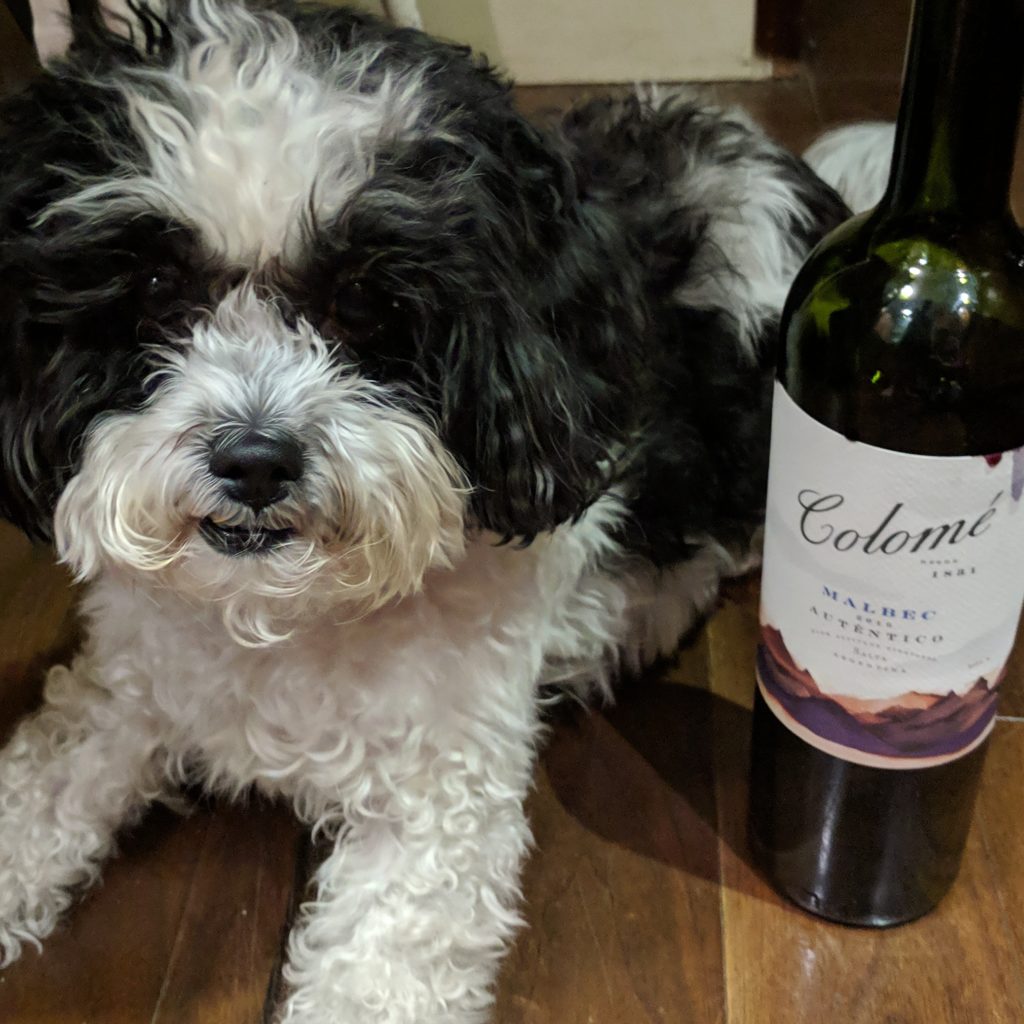 Colome Autentico 2017, Salta, Argentina, $on-premise only
Colome Autentico 2017, Salta, Argentina, $on-premise only
This 100% Malbec is deep purple in color with intense aromas of wood, plum, black fruit. The dry palate displays very ripe blackberry and blueberry joined by floral and spice, with firm, ripe tannins, full body and medium+ length. It is released young, but can age five to seven years.
Colome Altura Maxima 2014, Salta, Argentina, $125.00
Also 100% Malbec, this wine spends 23 months in old oak and one year in bottle before release. It is a very floral Malbec with fine grained tannins.
Antigal’s Malbec is the “Number One” Malbec you’ve never heard of
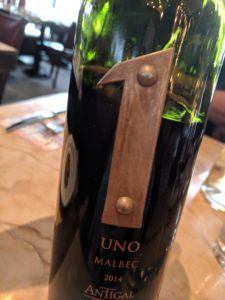 Antigal’s Malbec is number one. Well, it does kind of say so on the label. All kidding aside, Bodega Antigal’s Uno Malbec was the first wine launched by this young Argentine producer and proudly displays the number one on its label. Its iconic numeral and name were first applied at the wine’s launch party in 2005 when a designer crafted the number from a metal barrel hoop in an effort to celebrate this new release. The design was well received, and the name stuck. Consequently, they continue to “label” the Malbec Uno with a replica of that initial metal cut out, complete with rivets. These 1s are affixed by hand, assembly-line style, by local women who work in the winery. The back label is silk-screened directly onto the bottle. They admit that this is a very expensive way to adorn their wine but recognize that the package design is the marketing and thus very important to getting their brand noticed and known.
Antigal’s Malbec is number one. Well, it does kind of say so on the label. All kidding aside, Bodega Antigal’s Uno Malbec was the first wine launched by this young Argentine producer and proudly displays the number one on its label. Its iconic numeral and name were first applied at the wine’s launch party in 2005 when a designer crafted the number from a metal barrel hoop in an effort to celebrate this new release. The design was well received, and the name stuck. Consequently, they continue to “label” the Malbec Uno with a replica of that initial metal cut out, complete with rivets. These 1s are affixed by hand, assembly-line style, by local women who work in the winery. The back label is silk-screened directly onto the bottle. They admit that this is a very expensive way to adorn their wine but recognize that the package design is the marketing and thus very important to getting their brand noticed and known.
While the winery sits on the site of an historic winery, dating to 1897, in the Mendoza region of Argentina, everything else about it is new. In this regard, the winery facilities were constructed in the early 2000s, with an emphasis on high quality, high-tech equipment. Beyond the winery, they are heavily focused on Malbec, with a range of wines produced, including several single-vineyard wines. There are three unique vineyards currently under vine, with another under development.
Antigal began exporting its wines to the United States in 2007, choosing to push the on-premise trade over the retail market, feeling that its wines would do well by-the-glass as well as on full bottle wine lists. Of course, there are some retail stores that stock their wines. Since its early stateside arrival, it has successfully negotiated distribution contracts for all 50 states, which is essentially the equivalent of negotiating with 50 different countries given the U.S.’s state-specific liquor laws.
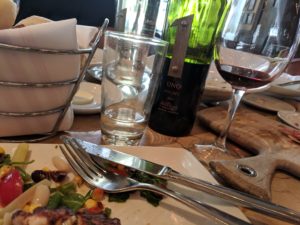 I recently had the opportunity to taste the Uno Malbec 2014 over lunch at Brasserie Cognac on a lovely summer’s day. Despite the propensity to pair a Malbec with a meat-based dish, I was more inclined to opt for lighter fare due to the season and selected the grilled octopus salad. I was not disappointed as the Malbec was extremely elegant and well balanced with ripe fruit. It matched well with the salad and didn’t overpower it.
I recently had the opportunity to taste the Uno Malbec 2014 over lunch at Brasserie Cognac on a lovely summer’s day. Despite the propensity to pair a Malbec with a meat-based dish, I was more inclined to opt for lighter fare due to the season and selected the grilled octopus salad. I was not disappointed as the Malbec was extremely elegant and well balanced with ripe fruit. It matched well with the salad and didn’t overpower it.
Antigal’s newest addition to its line-up is its Uno Sauvignon Blanc 2018, which will be making its New York debut this fall, with an SRP of $15.00. Coming soon to a wine list near you.
TASTING NOTE
Bodega Antigal Uno Malbec 2014, Mendoza, Argentina, $21.00 (retail)
Aromas of berries, smoke, slight wood greet the nose, all of which persist on the dry palate. Ripe, yet nicely balanced fruit dominates, joined by well-integrated oak, culminating in long length. Very elegant and food friendly.
Celebrating Argentine Wines on World Malbec Day
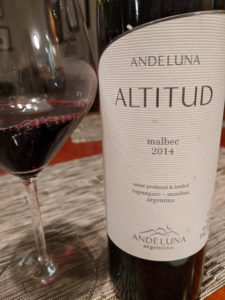 It’s time to break out the barbecue as we anticipate the arrival of fairer weather and grilling season this weekend. Plus, it’s time to celebrate Argentina’s signature grape variety on World Malbec Day, which takes place on April 17, 2018.
It’s time to break out the barbecue as we anticipate the arrival of fairer weather and grilling season this weekend. Plus, it’s time to celebrate Argentina’s signature grape variety on World Malbec Day, which takes place on April 17, 2018.
Admittedly, Malbec got its start in southwest France (think Cahors and – to a lesser extent – Bordeaux), having been cultivated in the area since Roman times. But the grape has been quite successful in making a home for itself in the Mendoza region of Argentina.
In fact, Argentina’s long relationship with Malbec dates to 1853 when agronomist Michel Aimé Pouget brought the grape to the New World country, having been hired to run an agricultural school there. On April 17th of that year, a bill was submitted to the legislature to establish the new school and was passed into law by early September. In addition to the school’s influence, Argentina’s early viticulture was also shaped by Italian and French immigrants, who brought their grape growing experience and expertise with them. Moreover, Malbec quickly adapted to its new home, rising in popularity and prominence. However, it wasn’t until 2011 that World Malbec Day took place for the first time.
On its own, this variety offers up fresh fruit aromas of black and bramble fruit and violet, usually joined by oak, vanilla due to barrel aging regimens. It generally produces wines with medium-to-full body, moderate-to-firm tannins and medium-to-high alcohol levels. Malbec grapes grown at the higher elevations found in the Andes Mountains benefit from the good diurnal variation and long hang time, developing thick skins and concentrated flavors.
But, while World Malbec Day is a great excuse to open up a Malbec wine, it is also a wonderful opportunity to celebrate Argentina’s wines in all their splendor and diversity. At the 11th edition of the Argentina Wine Awards, well titled as “Breaking New Ground,” 47 wines earned a score of 95 points and 17 wines received trophies: 6 red blends, 5 Malbecs, 1 Cabernet Sauvignon, 1 Cabernet Franc, 1 Chardonnay, 1 sparkling wine, 1 white blend and 1 sweet wine, proving that Argentina can produce more than just Malbec.
Of course, like wines from elsewhere, Argentine wines can be enjoyed with nearly any cuisine. However, with its adopted home being among the steak capitals of the world, it can be the perfect pairing partner for these wines.
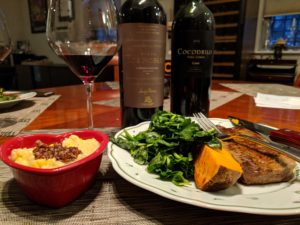 In gearing up for the “holiday,” Hess Family Wine Estates sent out recipes for meals featuring Grilled Tomahawk Steak with Squash And Zesty Watercress Salad (Amalaya recipe) and another for Seared Lamb with Fresh Corn & Quinoa Soup (Colomé recipe), to be enjoyed with its Colomé Malbec 2015, Salta, Argentina, $25.00 (100% Malbec)* and Amalaya Malbec 2016, Salta, Argentina, $16.00 (85% Malbec, 10% Tannat, 5% Petit Verdot) wines. I happily indulged in the recipes, tweaking them a bit to fit our tastes and our pantry.
In gearing up for the “holiday,” Hess Family Wine Estates sent out recipes for meals featuring Grilled Tomahawk Steak with Squash And Zesty Watercress Salad (Amalaya recipe) and another for Seared Lamb with Fresh Corn & Quinoa Soup (Colomé recipe), to be enjoyed with its Colomé Malbec 2015, Salta, Argentina, $25.00 (100% Malbec)* and Amalaya Malbec 2016, Salta, Argentina, $16.00 (85% Malbec, 10% Tannat, 5% Petit Verdot) wines. I happily indulged in the recipes, tweaking them a bit to fit our tastes and our pantry.
Specifically, we decided to cook our steaks in our cast iron skillet using a spice rub (we live in a NYC apartment and don’t have access to a grill), substituted a very large sweet potato in place of butternut squash and chose to forgo the other vegetables in the “squash with vegetable chips.” For the watercress salad, we skipped the habanero peppers and used lemon juice instead of lemon zest, with salt, pepper and good quality EVOO.
We also added the corn and quinoa soup to our meal from the Colome menu since it sounded so good. If you can grill your corn, it will definitely add a layer of depth and complexity, but you can just as easily “cheat” like I did and use a bag of frozen corn (much easier than wrestling the kernels off an ear of corn). The recipe calls for white quinoa, but we only had red quinoa and you can use the general quinoa ratio (1 cup quinoa to 2 cups water) rather than try to figure out 5.3 oz of quinoa. If you are dairy-free, substitute ghee or olive oil. I also added in some Cayenne pepper to give the soup a bit of a welcome (to us) kick.
All in all, it was a delicious dinner and went quite well with the two Cabernet Sauvignon wines.
TASTING NOTES
Viña Cobos Bramare Marchiori Vineyard Chardonnay 2016, Perdriel/Lujan de Cuyo, Argentina, $42.00
This wine was barrel fermented with native yeasts and underwent malolactic fermentation while in barrel. It then spent 12 months in French oak barrels, 50% of which were new. Despite the oak treatment, the oak character was relatively integrated and balanced, along with rich apple and tropical fruit flavors.
Amalaya Malbec 2016, Salta, Argentina, $16.00
This wine brings together 85% Malbec with 10% Tannat and 5% Petit Verdot. On the nose, the wine shows an intensity of berries, bramble fruit and a hint of smoke, which persist on the dry, full-bodied palate, balanced out with medium+ acidity and medium+ ripe tannins.
Andeluna Altitud Malbec 2014, Tupungato, Mendoza, Argentina, $20.00
Deep inky purple in color, this wine displays berries, oak, vanilla and a hint of earth on the nose. On the palate, it is dry with ripe black cherry and blackberry fruit, joined by some oak and herbal notes, with medium+ acidity, firm tannins, full body and medium+ length.
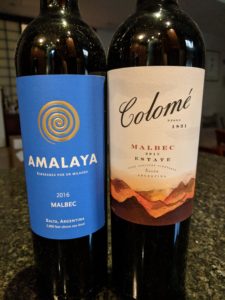 Colomé Malbec 2015, Salta, Argentina, $25.00
Colomé Malbec 2015, Salta, Argentina, $25.00
This wine spent 15 months aging in French oak barrels, which comes across as smoke and oak on both the nose and palate, joined by a slight floral note. It offers up good acidity with lots of blackberry and plum flavors, along with an herbal undercurrent and a long finish.
Vincentin Colosso 2014, Luyan de Cuyo and Valle de Uco, Mendoza, Argentina, $45.00
A blend of 94% Malbec, with 3% each of Petit Verdot and Cabernet Franc, this wine was aged for 24 months in new French oak barrels. It has an intense woody, red fruit, berries, spice and vanilla nose, which all persist on the dry, medium+-bodied palate, culminating in long length.
Bodega Sottano Reserva de Familia Malbec 2015, Luyan de Coyo, Mendoza, Argentina, $30.00
This wine spent 15 months in new oak (70% French and 30% American) barrels. The wine’s intense nose provides notes of plum, bramble fruit, oak and a hint of perfume, all of which persist on the luscious palate. An intensity of fruit character dominates, but the wine is also very fresh, with balance and long length.
Bodegas Norton Gernot Langes 2012, Luyan de Cuyo, Mendoza, Argentina, $100.00
This 80% Malbec, 10% Cabernet Sauvignon, 10% Cabernet Franc blend has an intense nose of violets, oak, cedar, berries and vanilla. Its palate is dry with a sweet attack of ripe fruit of blackberries, black cherry, firm tannins, full body and long length. It is a powerful and concentrated wine that will improve with bottle age.
Viña Cobos Cocodrilo Corte 2015, Luyan de Cuyo and Valley de Uco, Mendoza, Argentina, $28.00*
Bringing together 77% Cabernet Sauvignon with 15% Malbec and 8% Cabernet Franc, this Bordeaux-style blend is lush with ripe fruit on the nose and palate, redolent of blackberry, black cherry and a woody undercurrent. It shows good acidity, with firm tannins and medium+ body on the powerful and rich palate.
Bodega Luigi Bosca Finca Los Nobles Field Blend Cabernet Bouchet, 2012, Mendoza, Argentina, $70.00*
Produced from a blend of Cabernet Sauvignon and Alicante Bouchet grapes that have been grown together for more than 90 years, at an altitude of 1,050 meters above sea level, this wine is then aged for 24 months in new French oak barrels. This is an elegant, yet powerful wine, with classic Cabernet Sauvignon characteristics. It displays aromas and flavors of blackberry, oak, smoke, herbs and dried flowers with bright acidity, firm tannins, and full body.
Proemio Reserve Syrah Garnacha 2015, Mendoza, Argentina, $20.00
The 50-50 blend was co-fermented before being aged for 12 months in French oak. With aromas of cloves, leather and black cherry, the dry wine then offers up bright acidity, black cherry, oak, spice, firm tannins and long length on its palate. A really lovely wine, especially for the price.
*Argentina Wine Awards Trophy Winner
All Dried Up: The Wines of Mister Amarone
Some people might address Masi Agricola’s president as Signor Boscaini, but a recent book profiling the well-known Venetian wine producer refers to him as “Mister Amarone.” A leader in the Amarone denomination, it is likely that Sandro appreciates the moniker, having tirelessly worked to improve the quality of this wine since the 1950s.
Of course, some might even say that the man is all dried up. Well, not him exactly, but most of his grapes. While the process of drying grapes is de rigor for Amarone della Valpolicella DOCG, this practice is found in few other places, but Masi’s president has exported the technique both far and near. In fact, many of his wines feature a special logo, Appaxximento, Masi Expertise® coupled with Sandro’s signature, further emphasizing the winery’s commitment to this wine production style.
Boscaini’s initial efforts focused on maintaining the concentration for which Amarone has always been known, while losing the oxidized character. In this regard, he aimed to preserve Venetian tradition, while improving the wine’s quality, introducing new yeast strains that could work at higher alcohol levels and adjusting the fermentation period from 60 days to 45 days. In the 1950s, fermentations often took as long as 18 months. As a result, today’s wines are much fresher than their predecessors.
But despite technological embraces, other aspects of production remain quite traditional such as the use of wood mats on which to dry the Amarone-bound grapes. For this purpose, Masi prefers bamboo, the spherical surface of which reduces the contact between the mats and the grape skins and ensures good air flow. Whereas some producers have shifted away from this traditional approach
This delicate balance between tradition and modern practices further comes into play when controlling the environment in the drying facilities. When possible, the room’s temperature and humidity are regulated naturally, with vents opened and closed to create the ideal conditions for drying. However, when necessary, a computer takes over to provide the ideal climatic parameters. Designed by the Masi Technical Group in the 1990s, this complex system is referred to as NASA (Natural Appassimento Super Assisted).
In neighboring Friuli, Boscaini has brought the appassimento procedure to bear on the Verduzzo grape. Harvested rather late to achieve full ripeness, the grapes are then dried on racks for three weeks to concentrate the fruit and permit evaporation of the water content. These raisined grapes are fermented on their own before being briefly aged in barriques. They are then blended with Pinot Grigio, which has been picked much earlier to retain its acidity and fermented in stainless steel. When brought together, the result is Masianco, a complex wine with full body, depth and richness.
Conversely, the appassimento process is eschewed when producing Bonacosta, a Valpolicella Classico DOC made from Corvina, Rondinella and Molinara. Intended to be a fruity, young red wine, the simple production process, using non-dried grapes, retains this freshness.
Building in complexity among their Venetian reds, is Masi’s Campofiorin. Initially created in 1964, this wine had previously been called a ripasso, but Boscaini feels that this term has become corrupted and opts instead to label it as a Rosso del Veronese IGT and refers to it instead as a Supervenetian. Instead of conducting a more common technique of using the wine equivalent of an old tea bag, Masi dries grapes specifically for inclusion in the Campfiorin. Regardless of its name or label, the wine falls somewhere in between the fruity character of the Bonacosta and the big, Baroque style of an Amarone.
Masi also produces several different Amarone wines, including its entry-level, Costasera and Costaserva Riserva, as well as several different single-vineyard wines. However, the single-vineyard wines are only produced in excellent vintages, when conditions are right not only during harvest, but also once the grapes have been picked.
Farther afield, Boscaini’s imprint can be found in Argentina, where Masi launched a partnership with Norton in 1995. Here, Corvina grapes receive the same royal, dried-grape treatment and are then blended with Malbec. Appropriately named Passo Doble, this is a decidedly unusual and modern wine. All dried up? Maybe. But, all washed up? Never! Mister Amarone strikes again!
DiamAndes – A Diamond in the Argentine Rough
Bruno LaPlane is at home and ensconced in the Bordeaux wine industry having married into the Bonnie family, producers of Château Malartic-Lagravière and Chateau Gazin-Rocquencourt. However, with the increasing popularity of Argentina, he and the Bonnie family were eager to expand their interests. So, when the opportunity to join the Clos de los Siete project in Mendoza arose, they jumped at it. Accordingly, in 2005, the family purchased 130 hectares and built their own winery on the property, completed in 2009. Named for nearby Diamond Lake, in which the reflection of a volcano appears as a diamond, and the imposing Andes mountain range, DiamAndes was born.
DiamAndes released its Gran Reserva wine in New York earlier this year. This flagship wine is a blend of Malbec and Cabernet Sauvignon. The company is now ready to introduce additional wines to the market under the name of DiamAndes de Uco, which includes: Chardonnay, Viognier, Malbec and Syrah. Another new wine is the entry-level Perlita by DiamAndes, which blends Malbec and Syrah and retails for $10.00/bottle. Like LePlane, the Malbec grape, which does so well in Argentina’s high altitude vineyards, is also from Bordeaux. Not surprisingly, it accounts for 66% of the DiamAndes plantings.
Although these wines are priced at the value end of the market, they are still produced with the same careful attention to detail as those used in Bordeaux. More specifically, there is a keen emphasis on terroir, self-imposed strict yields (45 hl/ha) and hand harvesting, with a focus on crafting elegant wines. Aside from being located a world away from one another, the difference is that the cost of land and labor makes these Argentina exports much less expensive to produce, while still retaining the high quality for which the Bonnie family is known.
Chardonnay 2010
This grape variety represents 72% of the white plantings at DiamAndes. With a nose of slight spice, pear, some citrus and vanilla, the aromas repeat on the typically full-bodied palate, joined with some slight minerality.
Viognier 2010
Spice, apricot and tangerine aromas persist on the palate, along with floral notes. The full-bodied wine has medium acidity.
Malbec 2010
This wine presents with mostly black fruits and a slight floral character. It has nice acidity, with firm, yet ripe, tannins, becoming more complex on the palate with its flavors of blackberry, spice, vanilla and oak.
Gran Reserva 2007 (70% Malbec, 30% Cabernet Sauvignon)
A structured and elegant wine with spice, oak, blackberry, bramble fruit and slight eucalyptus notes, the tannins are quite firm, but should mellow with bottle age.
Also see my previous article on the Gran Reserva.
A Meeting of the (Winemakers’) Minds
While it is great to hear from winemakers about their wines, it isn’t exactly a unique experience. However, listening to a panel of winemakers from around the globe talk about key issues in the wine world is a special treat. And, one perhaps made even better when that panel is moderated by Kevin Zraly.
In July 2010, amidst a torrential downpour, I arrived at Moet-Hennessy’s Chelsea offices damp, but not downtrodden. Welcoming the cup of coffee that was offered, I spent some time viewing various displays for Moet-Hennessy products. Once everyone had arrived and was assembled in the conference room, the Winemakers’ Forum began.
The panel included Leone Contini Bonacossi, Owner of Capezzana; Marc Sorrel, Estate Director for Chateau de Sancerre; Nicolas Audebert, Cheval des Andes’ winemaker; Ian Morden, Estate Director for Cloudy Bay; Joel Burt, Assistant Winemaker at Domaine Chandon; Andrea Leon, Winemaker for Casa Lapostolle; Andrea Felluga, Livio Felluga’s winemaker; Laura Bianchi, owner of Monsanto; Chris Millard, executive winemaker at Newton Vineyard; Winemaker Manuel Louzada from Numanthia; and Terrazas’ senior winemaker, Adrian Meyer.
Kevin kicked off the session by asking the winemakers to share their favorite wine memories, especially those that cemented their interest in, and love for, wine. For some, it was a single wine – perhaps a 1996 Bandol (Adrian), Krug 1928 (Nicolas) or a Bonne Mares from one’s birth year (Marc). For others, it was a particular experience – tasting sparkling wine in the winery with one’s grandfather (Manuel) or stealing down into the cellar at 13 (Andrea L.) or 5 (Leone) and drinking from either the bottle or barrel, respectively. And, as Ian reminded everyone, context is everything; “You can’t divorce wine from the occasion.”
Trekkies know that space is the final frontier, but Kevin next queried where in the world was the next wine frontier. There was a diversity of responses ranging from the need to explore higher altitudes due to climate change and the shift in wine styles to up-and-coming grape varieties and regions. There was no one grape variety identified, but rather, certain varieties were associated with new areas such as Syrah in New Zealand’s Hawkes Bay; Chenin Blanc in Stellenbosch, South Africa; Petit Verdot in Maipu, Chile; and the rediscovery of Trebbiano, Malvasia and Friulano.
Building on the topic of change and innovation, the discussion then centered on changes in winemaking. On this, there was more consensus among panel members. Many spoke about the return to more traditional winemaking and a less is more approach. Another theme was an increased emphasis on the vineyard and terroir.
Viticultural advances were further noted such as drip irrigation and the development of rootstocks. A focus on balance was also mentioned, whether through canopy management, matching grape varieties with the right climate or achieving balance in the wine itself.
Here, Mary Ewing-Mulligan asked the panel to address the fact that the alcohol is not in balance even though winemakers say it’s not about alcohol. In response, Nicolas explained that sometimes waiting for full maturity in the grapes results in high alcohol levels. He added that while “[the alcohol level] could be high and be too much, it could [also] be high and you don’t feel it.” “I feel it,” said Mary.
With regard to wine in the market, both Laura and Marc lamented that consumption habits had declined in Europe, especially with the younger generation which drinks less wine and more beer and cocktails. While others agreed, Ian countered that new markets, especially China and Brazil, were becoming increasingly sophisticated with regard to wine.
More specific to the American market, Leone expressed pleasant surprise at the level of knowledge displayed by the people at her hotel’s reception desk. She was impressed with the broad picture they had on wine compared with young Italians whom, she said, have a more regional palate.
When Kevin mused about the outlook for the U.S. – Is it generally getting better? There was a resounding yes from the group. However, this sentiment needs to be tempered in light of recent economic issues.
And, what was their opinion of American wines? A number of people mentioned the quality of Oregon wines, naming its Pinot Noirs and sparkling wines in particular. However, Laura confessed that she had tasted American Sangiovese, but wasn’t worried about the competition (she produces Chianti, which is primarily made from Sangiovese).
Questioned about wine critics, the feeling was that critics play an important role, helping to narrow the field for the consumer. However, it was also admitted that, like any system, it has some good and bad elements associated with it. While Andrea L. stated that it was rewarding as a winemaker to receive high scores, Nicolas emphasized that, “if you are making wine as a passion, you are not making wine for critics.” Joel also suggested that the power of big critics is waning due to blogs, an opinion that Chris shared.
As a final topic, the conversation turned to biodynamics and organics. A few, such as Nicolas and Adrian, admitted that being organic was easy for them due to climatic conditions. Yet, Andrea F. and others pointed to high rainfall and humidity as impediments to such practices. However, the overall feeling was that such viticultural practices were crucial in and of themselves, not as marketing efforts. Consequently, many winemakers don’t indicate their practices on the label. In this regard, Joel proposed that, “It’s important to be stewards of the land,” an emotion echoed by Andrea F., who noted that, “We have to take care of the planet.”
The Torrontés Project
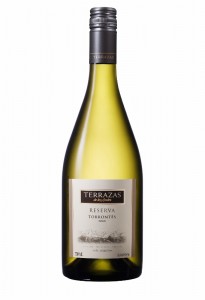 Argentina has distinguished itself with not just one, but two signature grape varieties – Malbec and Torrontés. The latter is primarily grown in northern Argentina, with the Cafayate appellation, within the province of Salta, being among the most highly regarded area for production. Generally planted at high altitudes in the Andes Mountains, the grapes receive full sun during the day, while the cooler nights permit the grapes to retain vibrant acidity. Highly aromatic, these fresh, unoaked whites offer floral and fruit aromas that pair well with lightly-spiced Asian cuisine, summer salads and fish.
Argentina has distinguished itself with not just one, but two signature grape varieties – Malbec and Torrontés. The latter is primarily grown in northern Argentina, with the Cafayate appellation, within the province of Salta, being among the most highly regarded area for production. Generally planted at high altitudes in the Andes Mountains, the grapes receive full sun during the day, while the cooler nights permit the grapes to retain vibrant acidity. Highly aromatic, these fresh, unoaked whites offer floral and fruit aromas that pair well with lightly-spiced Asian cuisine, summer salads and fish.
A blind tasting, affectionately referred to as the Torrontés Project, placed the Terrazas de los Andes Reserva Torrontés 2010 (SRP $15.00) in the company of Xavier Flouret Flaca 2009 (SRP $16.00). Despite being from the same appellation and having been produced in a similar method (stainless steel fermentation), the two wines displayed marked differences.
The Flaca had pronounced floral, spice and tropical fruit notes on the nose, which persisted on the palate. With its medium+ acidity and medium+ body, the wine was bold, but balanced.
The Terrazas wine was paler in color, with less overt aromas consisting of floral and peach, coupled with candied citrus on the palate. Higher in acidity and slightly lighter in body, this wine was more restrained.
Two from the Clos
 The vineyards of Clos de los Siete in Mendoza, Argentina, are the brainchild of Michel Rolland, flying winemaker, closely associated with Bordeaux. The ambitious project seeks to bring five owners together to create their own wines as well as a collaborative wine.
The vineyards of Clos de los Siete in Mendoza, Argentina, are the brainchild of Michel Rolland, flying winemaker, closely associated with Bordeaux. The ambitious project seeks to bring five owners together to create their own wines as well as a collaborative wine.
Although the project was launched in 1998 and the Clos de los Siete by Michel Rolland wine has been available since 2002, a new wine from the property recently made its debut—DiamAndes Gran Reserva. Owned by the Bonnie family of Bordeaux, France (and proprietors of Château Malartic Lagravière), the vineyards for Bodega DiamAndes were planted in 2005.
While the wines are produced from vines grown in close proximity, the foci of the winemakers are different. Whereas the Clos de los Siete by Michel Rolland is produced from a blend of Malbec, Merlot, Cabernet Sauvignon and Syrah, with actual percentages varying from vintage to vintage, the DiamAndes is heavily comprised of Malbec, seasoned with Cabernet Sauvignon.
I tasted these two wines side by side from the same vintage, 2007, as a way to compare and contrast the different blends from the same terroir.
The Clos de los Siete (48% Malbec, 28% Merlot, 12% Cabernet Sauvignon and 12% Syrah) was fruit forward in style with youthful notes of blueberries, vanilla, plum and slight wood. The full-bodied wine had medium+, but ripe, tannins and an overall ripe fruit/jammy appeal.
In comparison, the DiamAndes Gran Reserva, comprised of 70% Malbec, 30% Cabernet Sauvignon and aged in French oak (presumably new since the winery is new itself), was more elegant and austere. This wine showed some slight development on the nose along with more overt oak/wood aromas. Similarly full-bodied, but with dustier tannins, this wine offered flavors of dark plum, oak and vanilla. Despite the more obvious use of oak, this wine was beautifully balanced.
Although one style may appeal to someone’s palate more so than the other, I enjoyed them both for their differences.

